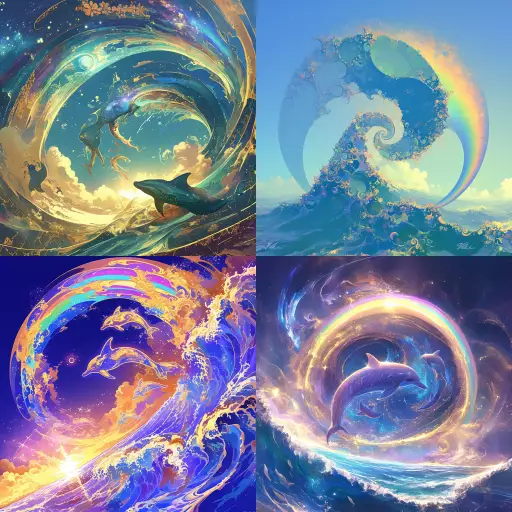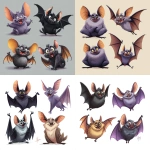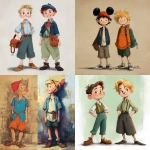Explore the Best AI Image Gallery

Where Art Meets Tech: Exploring the Impact of 5G on Creativity
The world is experiencing a technological revolution driven by 5G, a next-generation wireless network promising unprecedented speed, capacity, and responsiveness. This transformative technology extends its reach far beyond smartphones and streaming, poised to reshape industries like healthcare, transportation, and, crucially, the creative sector.
From immersive virtual reality experiences to real-time collaborative design projects, 5G empowers artists, designers, and innovators with new tools to express themselves and engage audiences in unprecedented ways. This blog post explores the multifaceted impact of 5G on creativity, delving into its potential applications, ethical considerations, and future trends.
The Creative Canvas: Unleashing New Possibilities
5Gs low latency and high bandwidth open doors to groundbreaking creative applications:
- Immersive Experiences: 5G enables the creation of truly immersive virtual reality (VR) and augmented reality (AR) experiences. Artists can transport audiences into interactive worlds, blurring the lines between the physical and digital realms. Imagine attending a concert where you can interact with virtual avatars or exploring a museum exhibit that comes to life through AR overlays.
- Real-Time Collaboration: 5G facilitates seamless real-time collaboration between creatives across geographical boundaries. Designers can work together on projects in synchronized environments, fostering innovation and accelerating the creative process. This opens up exciting possibilities for international collaborations and remote work within the arts.
- Interactive Installations: 5G powers interactive art installations that respond to viewers presence and actions. Artists can create dynamic works that engage audiences in new and unexpected ways, blurring the lines between spectator and participant.
- Sensor-Driven Art: 5G enables the integration of sensors into artistic creations, allowing for responsive and adaptive artworks. Imagine sculptures that change shape based on ambient temperature or paintings that react to viewers heartbeats, creating a unique and personalized experience.
Ethical Considerations: Navigating Uncharted Territory
As with any powerful technology, 5G raises important ethical considerations for the creative industry:
- Data Privacy: 5G-enabled applications often collect vast amounts of user data. Its crucial to ensure that this data is handled responsibly and ethically, protecting user privacy and preventing misuse.
- Accessibility: The benefits of 5G should be accessible to all, regardless of their socioeconomic status or geographical location. Bridging the digital divide is essential to ensure equitable access to these transformative technologies.
- Ownership and Copyright: The lines between creator and consumer can become blurred in 5G-driven creative environments. Clear guidelines are needed to address issues of ownership, copyright, and intellectual property rights in these evolving contexts.
- Algorithmic Bias: AI algorithms used in creative applications can perpetuate existing societal biases. Its crucial to develop and deploy these algorithms responsibly, mitigating bias and promoting fairness.
Future Trends: Shaping the Creative Landscape
5G is poised to continue shaping the future of creativity:
- The Metaverse: 5G will be instrumental in building immersive and interactive metaverse experiences, where users can create, share, and monetize digital content. This opens up new possibilities for artists, musicians, and creators to engage with audiences in entirely new ways.
- Personalized Art: 5G will enable the creation of personalized art experiences tailored to individual preferences and tastes. Imagine AI-powered tools that generate unique artwork based on your mood or favorite music.
- Edge Computing for Creativity: 5Gs edge computing capabilities will bring processing power closer to users, enabling real-time creative workflows and immersive applications without latency delays.
- Blockchain Integration: The combination of 5G and blockchain technology will revolutionize the way creative works are shared, distributed, and monetized. Artists can directly connect with their audiences, ensuring fair compensation and ownership rights.
As 5G continues to evolve, its impact on the creative industry will only grow more profound. By embracing its potential while addressing the ethical challenges it presents, we can unlock a future where creativity knows no bounds.




](https://images.ai-img.art/thumbnails/150/3020b8c2b6d9be07e042357107af1de10deb274a41d2b0f332684ad4b532a702.webp)















](https://images.ai-img.art/thumbnails/150/269414b0e541026702e9e67c67602c96162f37ff460a388b3b36314c8fc936dd.webp)


















](https://images.ai-img.art/thumbnails/150/5197af8969d850e2a43e141d41e482ccbceedebceb2a4caf9f098f943f9d1b0f.webp)
](https://images.ai-img.art/thumbnails/150/8d1fe5a7a49cfc96747182431a853357913286d89258383caab2d3b4681afcb5.webp)


](https://images.ai-img.art/thumbnails/150/485c8b1c747827bdc9a962f8a1919b3c259b18dd263b260208a1eae19fb85e07.webp)





](https://images.ai-img.art/thumbnails/150/2fbd98ecfc425cfc1597779121e1c0305437067779e9c471eb64ff9615d5be98.webp)